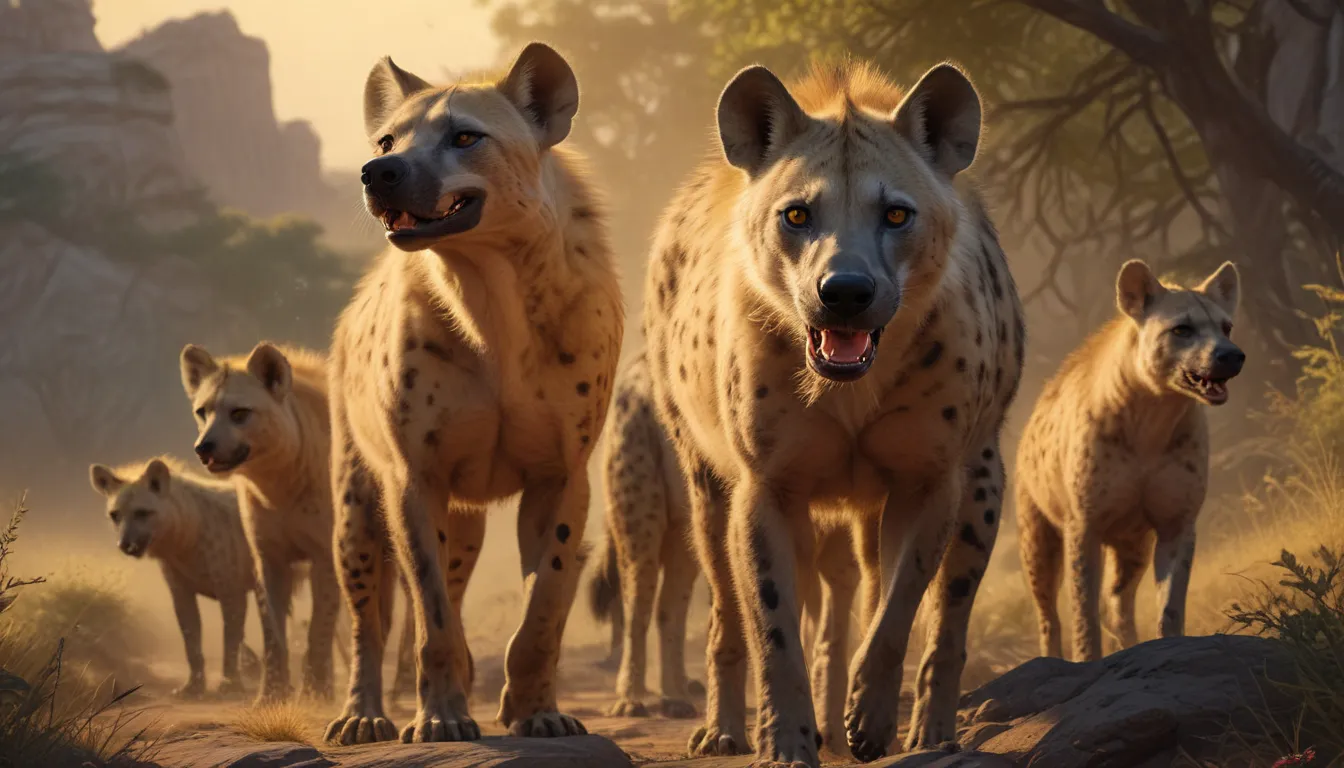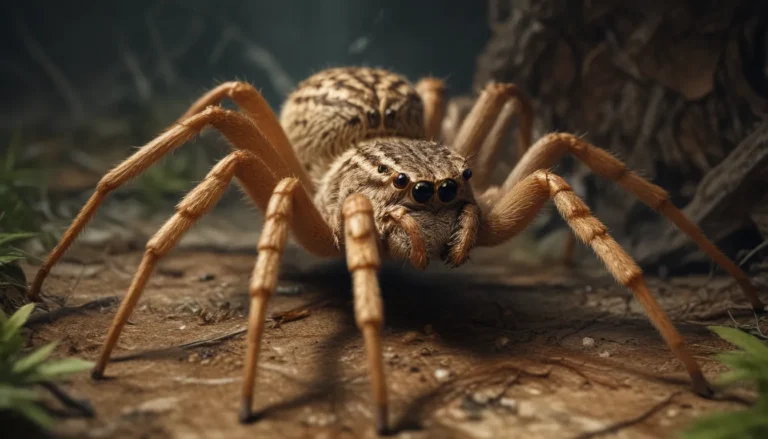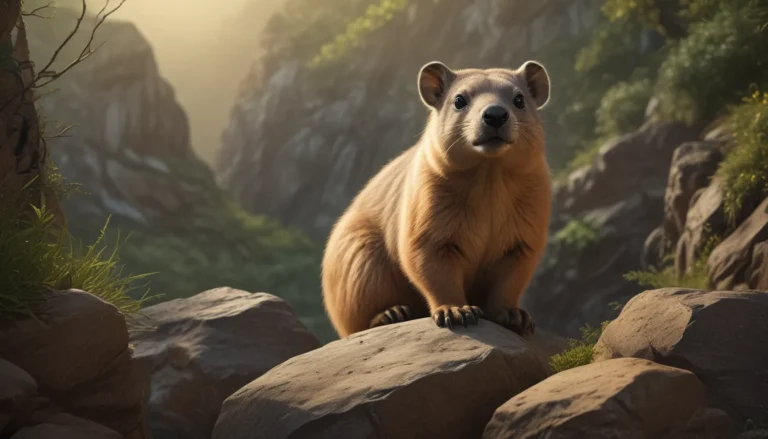The pictures we use in our articles might not show exactly what the words say. We choose these pictures to make you interested in reading more. The pictures work together with the words but don’t take their place. The words still tell you the important facts.
Welcome to the intriguing world of hyenas, where fierce predators roam the vast plains of Africa and parts of Asia. Despite their reputation as scavengers and occasional aggressors towards humans, hyenas are complex animals with unique behaviors and adaptations that set them apart from other carnivores. Join us on a journey to uncover the hidden truths and fascinating facts about these enigmatic creatures.
Unveiling the Diversity of Hyena Species
In the family Hyaenidae, there exist four living species of hyenas, each with distinct characteristics and behaviors. The spotted hyena, striped hyena, brown hyena, and aardwolf each play a unique role in their respective ecosystems. Spotted hyenas, being the largest species, are known for their wide range and complex social structures. On the other hand, aardwolves, the smallest of the four, specialize in feeding on insects, particularly termites.
The evolutionary history of hyenas divides them into two main types: dog-like hyenas and bone-crushing hyenas. While dog-like hyenas are smaller and more agile, bone-crushing hyenas have robust builds and powerful jaws for crushing bones. Understanding the diversity within the hyena family sheds light on their evolution and ecological roles in the wild.
Exploring the Surprising Relationships of Hyenas
Despite their wolf-like appearance, hyenas are genetically more closely related to cats than dogs. This genetic connection explains their feline behaviors, such as grooming and territorial habits. Female hyenas, particularly spotted hyenas, exhibit remarkable dominance in their social circles, challenging traditional notions of male hierarchy in the animal kingdom.
One of the most intriguing hyena facts relates to the unusual genitals of female spotted hyenas. Their pseudo-penises and pseudo-scrotums mystify researchers and highlight the unique reproductive strategies employed by these animals. This distinctive trait further showcases the complexity of hyena biology and behavior.
Decoding the Language of Hyenas
Contrary to popular belief, the laughter-like calls of hyenas do not signify joy but rather serve as a form of communication. Spotted hyenas use a range of vocalizations to convey aggression, submission, and territorial boundaries within their clans. These vocal cues play a crucial role in maintaining social structures and coordinating group activities among hyenas.
Intelligence is a hallmark of hyenas, with spotted hyenas demonstrating problem-solving skills on par with primates. Their ability to plan hunting strategies, form alliances, and outwit rivals showcases the remarkable cognitive abilities of these creatures. As efficient hunters, spotted hyenas rely on teamwork and coordinated attacks to secure prey and sustain their clans.
Unveiling the Mysteries of Hyena Behavior
From hunting strategies to parental care, hyenas exhibit a diverse range of behaviors that continue to intrigue researchers and nature enthusiasts alike. Hyenas' powerful bite force, unique bone-digesting abilities, and impressive hunting prowess highlight their resourcefulness in challenging environments. Spotted hyena cubs, born with eyes open and teeth ready, face intense competition within their clans from an early age.
Hyenas' interactions with humans present a complex dynamic, with instances of attacks on humans, livestock, and even grave sites. Despite these occasional conflicts, hyenas play a vital role in their ecosystems as scavengers and top predators. Their adaptability and resilience in the face of human encroachment underscore the enduring presence of hyenas in diverse habitats.
Embracing the Cultural Significance of Hyenas
Throughout history, hyenas have captivated human imagination and featured prominently in cultural narratives and beliefs. From ancient Egyptian practices of taming hyenas for hunting to modern-day superstitions about their medicinal properties, hyenas hold a unique place in human folklore. Stories of hyenas' resilience, cunning, and mystical connections continue to shape cultural perceptions of these enigmatic creatures.
President Theodore Roosevelt's pet hyena, Bill, provides a glimpse into the intimate relationships humans have formed with these wild animals. Despite their fearsome reputation, hyenas inspire both curiosity and admiration for their adaptability and intelligence. By delving into the multifaceted world of hyenas, we gain a deeper appreciation for the complexities of nature and the intricate web of life we share with these fascinating creatures.
Conclusion: Embracing the Enigma of Hyenas
As we conclude our journey into the world of hyenas, we are reminded of the vast diversity, remarkable adaptations, and complex behaviors that define these enigmatic animals. From their evolutionary origins to their intricate social dynamics, hyenas challenge our preconceived notions and invite us to explore the mysteries of the natural world.
By unraveling the hidden truths and fascinating facts about hyenas, we gain a deeper understanding of the interconnectedness of all living beings and the importance of preserving biodiversity. As guardians of their ecosystems, hyenas play a vital role in maintaining ecological balance and shaping the landscapes they inhabit.
As we continue to uncover the secrets of hyenas and other wildlife, let us embrace the wonder and awe of the natural world. Through curiosity, compassion, and stewardship, we can protect and cherish the magnificent creatures that share our planet. Join us in celebrating the diversity, resilience, and beauty of hyenas as ambassadors of the wild and symbols of the awe-inspiring wonders of nature.






